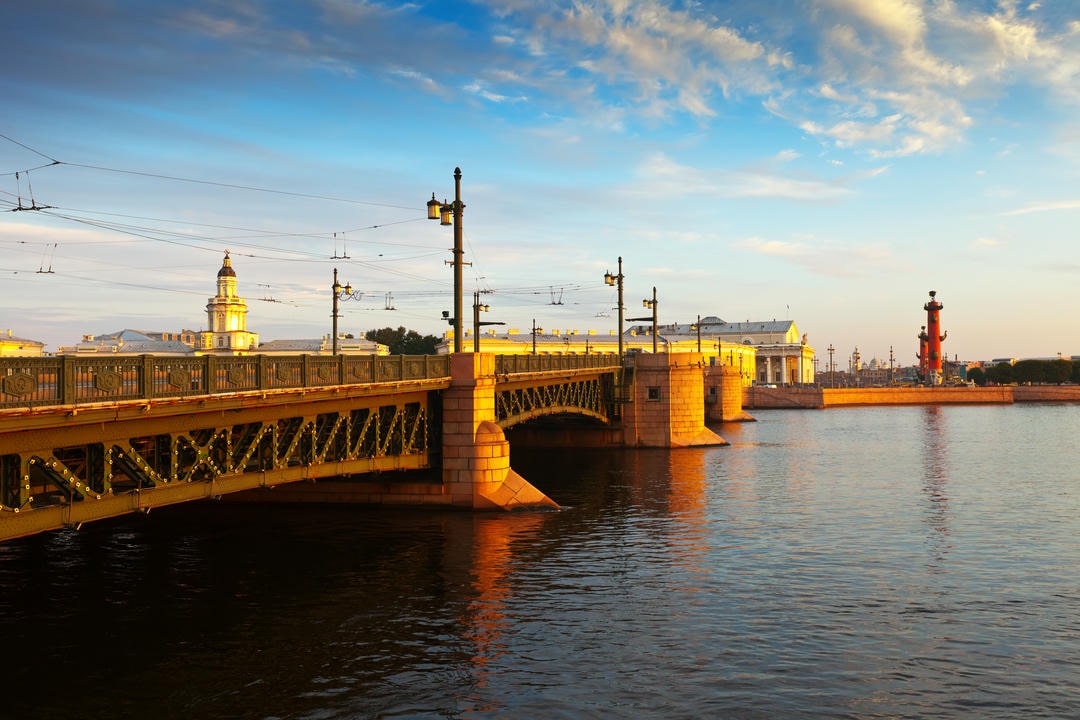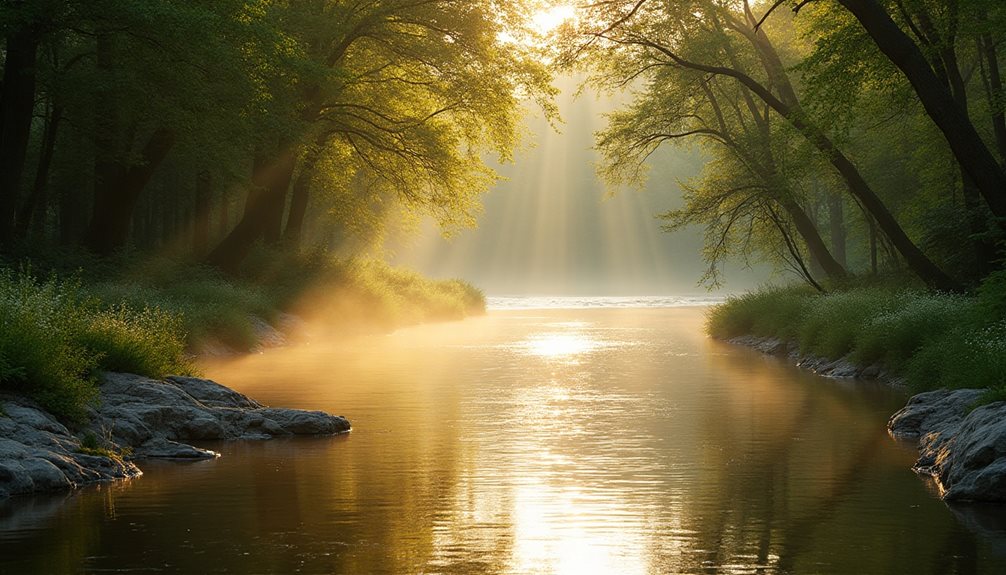Volgograd, Russia, captivates with its unique blend of past and present. This city, etched into the annals of history for its role in World War II and the iconic Battle of Stalingrad, stands resilient yet transformed. Majestic landmarks like the Motherland Calls statue and contemporary architecture create a striking skyline. Cultural festivals and local cuisine add vibrant layers to its identity. Discover how Volgograd harmonizes its historical roots with modern progress.
Introduction

Volgograd, known as a Hero City, stands proudly on the banks of the mighty Volga River.
Nestled along the mighty Volga River, the city of Volgograd stands as a tribute to resilience and history, earning its distinguished title as a Hero City.
This heroic legacy is deeply woven into its fabric, stemming from its pivotal role during the Battle of Stalingrad in World War II.
Volgograd’s strategic importance is underscored by its position on the Volga, a crucial artery for commerce and transportation in Russia.
The river’s presence not only facilitated the city’s historical defense but continues to drive its economic vitality.
History
Throughout its storied existence, the city of Volgograd has been a witness to some of the most pivotal moments in Russian history.
This city’s cultural influences are woven into the fabric of its historical narratives, each thread telling tales of resilience and transformation. From the echoes of the Battle of Stalingrad, where courage clashed against tyranny, to its rebirth in modern times, Volgograd stands as a symbol of human spirit.
The city’s landscapes carry whispers of its past, inviting the free-spirited to explore and discover stories of endurance, identity, and the enduring quest for freedom that defines Russian history.
Founding and Early Development

The origins of Volgograd trace back to its establishment as Tsaritsyn in 1589, a strategic move by the Russian Empire to safeguard its southern frontiers.
This nascent settlement emerged at the confluence of the Volga and Tsaritsa rivers, essential for defending against nomadic incursions.
As Tsaritsyn’s origins unfolded, it became a vital link in Russian fortifications, a bulwark symbolizing resilience and ambition.
The fort’s wooden walls and watchtowers stood as sentinels of security, fostering a sense of liberty among its inhabitants.
By the dawn of the 20th century, Tsaritsyn had burgeoned into a dynamic industrial and commercial hub, reflecting the rapid economic transformations sweeping across Russia.
This city witnessed remarkable industrial growth, driven by its strategic location along the Volga River, a essential artery for trade. Factories and shipyards emerged, fueling both economic liveliness and urban expansion.
Tsaritsyn’s commercial development thrived amidst bustling markets and vibrant trade networks, attracting entrepreneurs and traders alike.
This metamorphosis into a major center epitomized the spirit of innovation and progress, laying the groundwork for a city where history and modernity would seamlessly converge.
Key Events
The city now known as Volgograd has been a focal point of significant historical events that shaped its identity.
During the Russian Civil War, it was renamed Stalingrad in 1925, a tribute to Stalin’s defense efforts.
The Battle of Stalingrad (1942–1943) marked a decisive turning point in World War II, leaving the city in ruins, which were later transformed through extensive post-war reconstruction and a subsequent renaming to Volgograd in 1961, aligning with the era of de-Stalinization.
Russian Civil War
Amidst the tumultuous backdrop of the Russian Civil War, Volgograd, initially known as Tsaritsyn, emerged as a focal point of military and political significance.
Civil unrest pervaded as the Bolsheviks and anti-communist forces clashed, making it a critical battleground. The city’s defense, led by a determined Joseph Stalin, proved pivotal.
Stalin’s successful defense against encroaching forces marked Tsaritsyn’s historical significance, solidifying his reputation within the Soviet Union.
In 1925, to honor his role, the city was renamed Stalingrad. This renaming symbolized a shift towards a new era, intertwining the threads of history with the aspirations of modernity.
Battle of Stalingrad (1942–1943)
As the harsh winter of 1942 set in, the city of Stalingrad became the epicenter of one of World War II’s most pivotal confrontations.
This battle was a decisive turning point, halting the Nazi advance and showcasing Stalingrad’s significance in the broader conflict.
The fierce urban warfare and relentless siege tactics employed by both sides highlighted the WWII strategies that would shape the remainder of the war.
Amidst the ruins, the Soviets’ tenacity and strategic ingenuity broke the Axis momentum, instilling hope for liberation.
The victory at Stalingrad marked not just a military triumph but a symbol of resilience.
Post-War Reconstruction
Following the devastation of World War II, the city once known as Stalingrad stood as a tribute to both human endurance and the catastrophic toll of conflict.
In 1961, amid the sweeping changes of de-Stalinization, it was reborn as Volgograd, embracing a new era of urban renewal.
Post-war architecture played an essential role in its transformation, with modernist structures rising from the ashes, symbolizing resilience and progress.
The city’s reconstruction aimed to foster a sense of freedom and forward-thinking, shedding its past while honoring it.
Wide boulevards and open spaces were introduced, reflecting a hopeful vision for future generations.
Culture
Volgograd’s culture is a mosaic woven with historical significance and vibrant traditions. Each year, the city bursts into life during its celebrated cultural festivals. These events showcase the region’s unique heritage, drawing visitors into the heart of its artistic soul.
Local cuisine, a delicious reflection of Volgograd’s diverse influences, offers a culinary journey that entices the senses. Dishes such as shashlik and borscht invite exploration, while the aroma of freshly baked pirozhki offers a comforting embrace.
This dynamic interplay of past and present allows residents and travelers alike to experience the city’s rich, evolving identity in a liberating, unforgettable way.
Memorials and Museums

Amidst the echoes of history, Volgograd stands as a poignant memorial to the resilience and sacrifice witnessed during World War II. The city’s landscape is adorned with striking memorial architecture, each structure narrating a tale of courage and perseverance.
The iconic Mamayev Kurgan, crowned by the towering Motherland Calls statue, dominates the skyline, symbolizing defiance against tyranny. Nearby, museums meticulously preserve historical narratives, offering visitors a profound insight into the harrowing Battle of Stalingrad.
These institutions serve as silent sentinels, ensuring the legacy of those who fought remains undiminished, inspiring generations to embrace freedom and remember the past’s lessons.
Modern Identity
The echoes of history blend seamlessly into Volgograd’s evolving cityscape, where Soviet-era architecture stands alongside contemporary developments.
The city’s skyline is a dynamic mosaic, showcasing its Soviet influence through robust, monumental structures that narrate tales of resilience. These architectural giants share the spotlight with sleek contemporary architecture, reflecting a society that embraces innovation and modernity.
Walking through Volgograd, one experiences a unique symbiosis—where past and present coalesce, offering an environment that respects its history while nurturing a progressive spirit.
This fusion of styles not only defines Volgograd’s modern identity but also symbolizes the city’s quest for freedom and growth.
A towering symbol of resilience and unity, the Motherland Calls statue reigns as a cultural icon in Volgograd, encapsulating the spirit of a city shaped by its tumultuous history.
This monumental sculpture, standing at 85 meters, embodies the fierce determination and cultural significance of the Russian people.
As a tribute to national pride, it commemorates the Battle of Stalingrad, a pivotal moment of defiance against tyranny.
The statue’s commanding presence serves not only as a reminder of past sacrifices but also as an inspiration for future generations.
Its enduring legacy continues to evoke a profound sense of freedom and strength.
Tourist Attractions
Volgograd offers a wealth of tourist attractions beyond its iconic monuments.
Visitors can immerse themselves in vibrant cultural festivals, showcasing local traditions and crafts, providing a dynamic lens into the city’s rich fabric. These lively events often feature music, dance, and art, creating an atmosphere of celebration and unity.
For those with a culinary curiosity, Volgograd’s local cuisine promises a delightful journey through flavors, with hearty dishes reflecting a blend of Eastern European influences.
From bustling markets to cozy eateries, the city’s gastronomy invites travelers to savor each authentic bite.
Historical Sites
Rich in history and heritage, Volgograd captivates visitors with its array of historical sites that narrate the tales of its storied past.
The city stands as a monumental tribute to resilience, with historic architecture that echoes the courage of its ancestors. The iconic Motherland Calls statue pierces the sky, casting a reflective shadow over the city’s cultural heritage.
Stalingrad Battle Memorials preserve the spirit of bravery, inviting exploration into poignant chapters of history. Meanwhile, the Volgograd Panorama Museum offers a vivid portrayal of past conflicts, blending educational insight with immersive experiences.
Beyond its historical sites, Volgograd offers a vibrant array of modern attractions, including the picturesque Volga River, where visitors can enjoy boat excursions and stunning scenic views.
The city is also home to the Volgograd Arena, which gained international attention as a venue for the 2018 FIFA World Cup matches.
Together, these highlights showcase the dynamic blend of natural beauty and contemporary culture that defines Volgograd.
Volga River Boat Excursions
How often does one get the chance to drift along the majestic Volga River, soaking in the breathtaking vistas that have inspired countless artists and poets?
In Volgograd, boat tours offer travelers an unparalleled experience, inviting them to explore this iconic waterway. As the vessel glides through the serene waters, passengers are treated to panoramic views perfect for scenic photography.
Each turn reveals new landscapes, from lush riverbanks to charming villages dotting the horizon. These excursions provide a sense of freedom, allowing explorers to connect with nature while leaving the constraints of everyday life behind.
Volgograd Arena stands as a symbol of modern architectural prowess, having been a focal point during the 2018 FIFA World Cup.
Nestled along the banks of the Volga River, this stadium epitomizes contemporary Volgograd architecture with its sleek design and innovative structure.
The Arena’s sweeping curves and open framework invite spectators to experience both the thrill of the game and the beauty of freedom through design.
As a key element of the FIFA legacy, it continues to host football matches and events, drawing visitors into a dynamic blend of sport and modernity in the heart of historic Volgograd.
Nearby Attractions
Volgograd is surrounded by enchanting attractions that offer a glimpse into both its historical and modern marvels.
The Volga-Don Canal stands as a symbol of engineering prowess, complemented by the imposing Lenin Monument nearby.
Meanwhile, visitors can explore the Old Sarepta Museum-Reserve, an 18th-century German settlement, or enjoy the panoramic river views from the whimsical Dancing Bridge.
Lenin Monument
The Volga-Don Canal stands as a demonstration of human ingenuity and determination, linking two of Europe’s greatest rivers, the Volga and the Don, and facilitating an essential waterway for commerce and navigation.
This impressive feat of engineering exemplifies Volga-Don connectivity, cutting through challenging landscapes to craft a crucial conduit for trade and travel. Its significance resonates beyond mere practicality; it embodies the spirit of progress and the drive for freedom of movement.
Nearby, the imposing Lenin Monument watches over the canal, a reminder of history’s weight and the enduring human quest to shape the environment to our needs.
Old Sarepta Museum-Reserve
The Old Sarepta Museum-Reserve offers an enchanting glimpse into a preserved 18th-century German settlement.
This unique enclave stands as a symbol of German heritage and cultural preservation, offering visitors a chance to explore authentic architecture and artifacts from a bygone era.
The cobbled streets, quaint houses, and vibrant gardens evoke a sense of freedom and discovery, inviting exploration.
As one wanders through this living museum, the echoes of past settlers resonate, reminding us of a shared history that transcends borders and time, preserving the spirit of cultural exchange.
Dancing Bridge
A marvel of modern engineering, the Dancing Bridge gracefully arches over the mighty Volga River, offering pedestrians stunning panoramic views that captivate the senses.
This pedestrian bridge, an emblem of Volgograd’s embrace of innovation, provides a liberating experience as one strolls across its expanse.
The dancing bridge features a sleek design that seems to sway gently with the river’s flow, creating an illusion of movement and freedom.
As visitors traverse its length, they are treated to sweeping vistas of the cityscape and the vast, serene waters below, inviting contemplation and a sense of connection with the boundless horizon.
Conclusion
Volgograd stands as a tribute to resilience, with its storied past shaping its present and future.
The city’s enduring historical significance is etched into the landscape, from the grand monuments commemorating its pivotal role in World War II to its vibrant cultural fabric.
Resilience is woven into the very fabric of Volgograd’s identity, a city that stands as a tribute to human strength and tenacity amidst adversity.
Embracing resilience strategies, this remarkable city has triumphed over historical turmoil, reflecting a steadfast spirit that echoes through its streets.
Volgograd’s commitment to historical preservation serves as a bridge between its storied past and vibrant present, honoring the sacrifices and victories etched into its landscape.
Visitors are drawn to its narrative of courage, finding inspiration in its enduring monuments and memorials.
Volgograd’s legacy is one of unwavering resilience, a demonstration of the human desire for freedom and renewal.





